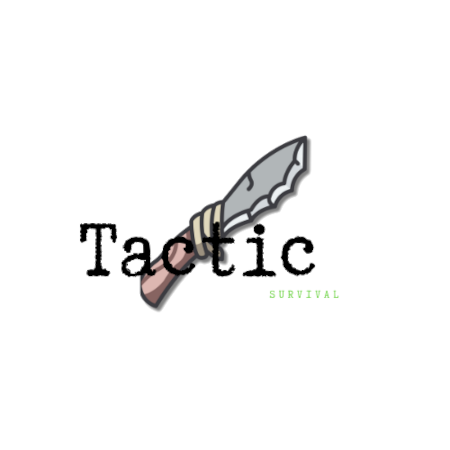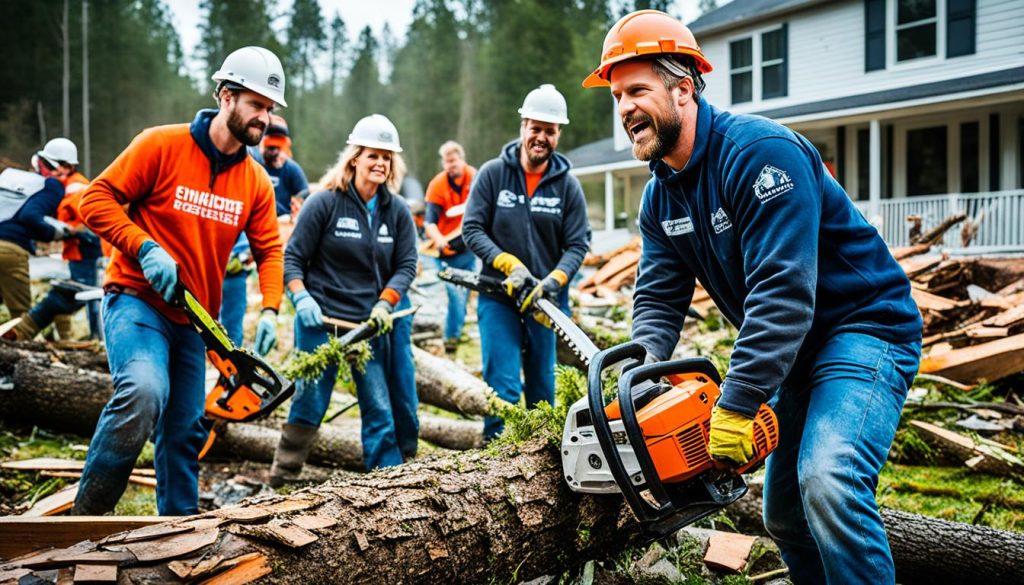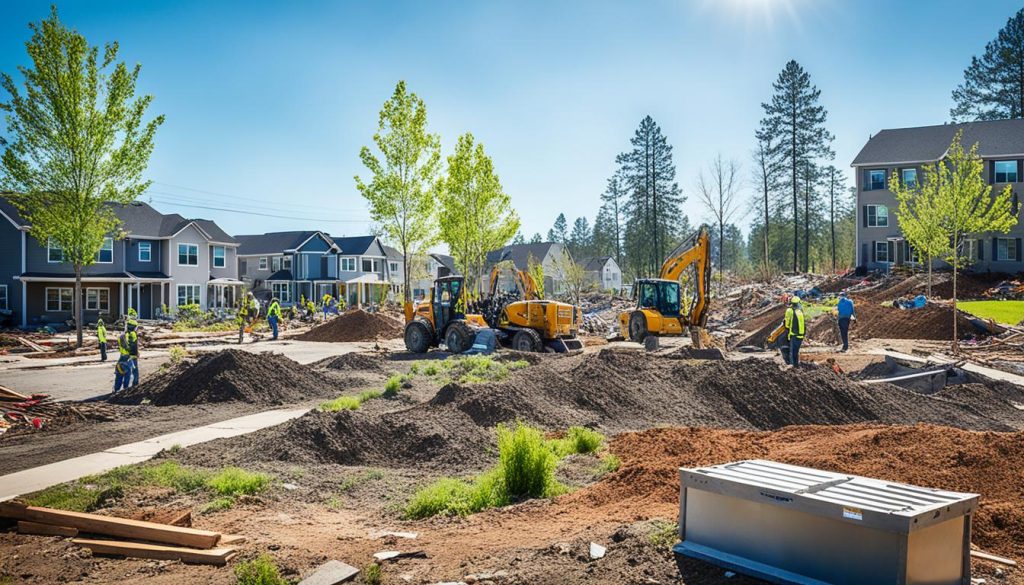Did you know that post disaster recovery efforts can take weeks, months, or even years to complete? The impact of a disaster can be widespread, affecting homes, communities, and individuals on a large scale. When faced with the daunting task of rebuilding and restoring, it’s essential to have a plan and know the necessary steps to take for a successful recovery.
In this guide, we will provide you with valuable information and resources on how to navigate the challenging process of disaster recovery. From ensuring the health and safety of yourself and your loved ones to addressing the damage inside your home, we have got you covered. Let’s embark on this journey together and work towards restoring your life after a disaster.
Key Takeaways:
- Recovery after a disaster can be a lengthy process, taking weeks, months, or even years.
- A well-executed disaster recovery plan is essential for a successful restoration.
- Ensuring the health and safety of individuals is a top priority during the recovery process.
- Inspecting and addressing damage inside the home is crucial for a safe return.
- Emotional well-being is as important as physical restoration, and seeking assistance is encouraged.
Health and Safety Guidelines for Post-Disaster Recovery
After a disaster strikes, ensuring the health and safety of you and your family is of utmost importance. The recovery process can be challenging, but by following these guidelines, you can navigate it more effectively and protect your well-being.
Prioritize Rest and Manage Exhaustion
Recovering from a disaster can be physically and mentally draining. It’s essential to prioritize rest and get enough sleep to restore your energy levels. Remember to take breaks when needed and ask for help from others in your community for support. Managing exhaustion will play a significant role in your overall recovery.
Stay Hydrated and Nourished
During the recovery process, it’s crucial to stay hydrated and nourished. Proper hydration aids in maintaining good health and helps your body recover faster. Ensure access to clean drinking water and consume a balanced diet that includes fruits, vegetables, proteins, and whole grains. This will enhance your body’s resilience and aid in the recovery process.
Wear Appropriate Safety Gear
As you navigate the post-disaster recovery phase, you may encounter hazardous conditions. It’s important to wear appropriate safety gear, such as gloves, masks, and sturdy footwear, to protect yourself from potential injuries or exposure to harmful substances. By taking these precautions, you can minimize the risk to your physical well-being.
Be Aware of New Safety Issues
Disasters often create new safety hazards. These might include unstable structures, fallen power lines, or contaminated water sources. Stay informed about potential risks in your area and be vigilant about identifying and addressing any new safety issues that arise. Regularly check local updates from reliable sources and follow the guidance provided.
Incorporating these health and safety guidelines into your post-disaster recovery plan will significantly contribute to your well-being. By prioritizing rest, staying hydrated, wearing appropriate safety gear, and staying aware of new safety issues, you can protect yourself and your family during the recovery process.
Aiding the Injured After a Disaster
During the chaotic aftermath of a disaster, it is crucial to prioritize the well-being of those who may be injured. This section provides valuable guidance on how to assess injuries, stabilize unconscious individuals, and administer basic first aid. By following these steps, you can provide immediate assistance to those in need and potentially save lives.
When confronted with injured individuals, it is essential to remain calm and act quickly. Follow these steps to ensure proper care:
- Assess the situation: Survey the area for any potential hazards and ensure your own safety before approaching the injured person.
- Check for responsiveness: Gently tap or shake the person to see if they respond. If there is no response, call emergency services immediately.
- Stabilize unconscious individuals: If the person is unconscious but still breathing, carefully position them on their side in the recovery position. This helps prevent choking and maintains an open airway.
- Control bleeding: Apply direct pressure to any wounds using a clean cloth or sterile bandage to stop or slow down bleeding.
- Administer basic first aid: Treat injuries based on their severity. Clean wounds with mild soap and water, cover them with sterile dressings, and elevate injured limbs if possible.
- Maintain body temperature: Keep the injured person warm by covering them with a blanket or clothing to prevent hypothermia.
- Do not feed liquids to unconscious individuals: It is important to avoid giving anything to drink to an unconscious person as it may cause choking or aspiration.
Remember, providing immediate assistance and facilitating timely medical care can significantly improve the chances of recovery for the injured. Be prepared by familiarizing yourself with basic first aid techniques and keeping a well-stocked first aid kit readily available.
Expert Tip:
“When stabilizing unconscious individuals, it’s crucial to protect their airway from obstruction. The recovery position is effective in preventing breathing difficulties and ensuring their safety until medical help arrives.” – Dr. Sarah Ramirez, Emergency Medicine Specialist
By following these steps and seeking professional medical assistance, you can play a vital role in ensuring the well-being of injured individuals in the aftermath of a disaster.
| Type of Injury | Treatment |
|---|---|
| Cuts and abrasions | Clean the wound with mild soap and water. Apply an antiseptic ointment and cover with a sterile bandage. |
| Bruises and sprains | Apply a cold compress to reduce swelling. Rest the affected area and elevate if possible. |
| Bleeding | Apply direct pressure to the wound using a clean cloth or bandage. Seek medical assistance if bleeding doesn’t stop or is severe. |
| Burns | Cool the burn by running cool water over it. Cover with a clean, non-stick dressing and seek medical attention for severe burns. |
Returning Home Safely After a Disaster
Returning home after a disaster can be a daunting experience, both physically and emotionally. It’s crucial to prioritize safety during this process to ensure a smooth transition. Here are some tips to consider for a secure return to your home:
- Stay updated: Utilize a battery-powered radio to receive important updates and instructions from local authorities.
- Inspect your home: Use a flashlight to carefully assess the damage to your property. Look out for structural issues, electrical hazards, and other potential threats.
- Be cautious of hazards: Watch out for fallen objects, debris, and hazardous materials that may pose risks to your safety.
- Stay informed about wildlife: Keep an eye out for animals that may have taken refuge in your home or the surrounding area. Exercise caution and seek professional assistance if needed.
- Seek professional inspection: If you have any doubts about the safety of your home, consider hiring a reputable disaster recovery company to assess the structural integrity and potential hazards.
Returning home is a significant step in the recovery process. By following these guidelines and seeking professional assistance if necessary, you can ensure a safe and secure return to your normal life.
Dealing with Damage Inside the Home
Once you have safely returned home, the next crucial step is to assess and address the damage inside your house. Take your time to carefully inspect different areas affected by the disaster, ensuring the safety of yourself and your family throughout the process.
Start by checking your natural gas and electrical systems. Look for any signs of damage, such as leaks or exposed wires. If you detect any issues, immediately turn off the main switches and contact a professional for assistance. Remember, safety should always be your top priority.
Next, examine the condition of your roof and foundation. Look for cracks, leaks, or structural damage that may have occurred during the disaster. Any compromised areas should be repaired or reinforced to prevent further deterioration and ensure your home’s stability.
Your appliances may also have been affected by the disaster. Check each appliance thoroughly, paying close attention to any signs of damage, malfunction, or electrical problems. In case of any doubts or concerns, consult with a professional technician or contact the manufacturer for guidance.
Additionally, it is critical to assess your water and sewage systems. Look for leaks, contamination, or blockages that may have occurred due to the disaster. If you notice any problems, contact a plumber to address the issues promptly and avoid further complications.
Don’t forget to inspect your food supplies as well. Dispose of any perishable items that may have been contaminated or spoiled during the disaster. It is better to be cautious and ensure the safety of your family’s health.
Disaster recovery assistance is an essential resource during this stage. Contact your insurance agents to report the damages and initiate the claim process. Document the extent of the damage through photographs and notes to support your claim. They will guide you through the necessary steps to recover and rebuild after the disaster.
In summary, assessing and addressing the damage inside your home is a crucial part of the recovery process. From checking your natural gas and electrical systems to inspecting your appliances, water and sewage systems, and food supplies, thorough evaluation ensures the safety and well-being of your household. By engaging with disaster recovery assistance and following these steps, you’ll be on your way to rebuilding and restoring your home after the disaster.
Being Wary of Wildlife and Other Animals After a Disaster
Disasters can disrupt the habitats of wild animals, presenting potential risks to individuals and communities. It is crucial to exercise caution and follow guidelines when encountering wildlife in post-disaster situations.
When dealing with wildlife:
- Do not approach injured or stranded animals, as they may be frightened or defensive. Instead, contact local wildlife officials or animal control for assistance in rescuing and rehabilitating them.
- Avoid cornering or attempting to rescue wild animals on your own. Wild animals may feel threatened in unfamiliar environments and can exhibit aggressive behavior. Allow proper authorities to handle such situations.
- If you come across dead animals, it is recommended to seek professional help for their removal. Dead animals can carry diseases or attract scavengers, further complicating the post-disaster environment.
In addition, it is essential to prioritize your safety and health:
- Seek immediate medical attention if you are bitten by an animal. Make sure to inform the healthcare provider about the circumstances and the type of animal involved to determine appropriate treatment.
- Stay up-to-date with vaccinations, especially tetanus shots. Disasters may increase the risk of exposure to infectious diseases, and maintaining appropriate immunization status is crucial to safeguarding your health.
- Follow any guidance or warnings provided by local authorities or disaster response teams regarding wildlife encounters. Their instructions are designed to ensure the safety and well-being of everyone affected by the disaster.
Remember, while wildlife encounters can be fascinating, it is essential to prioritize safety and seek professional support when dealing with wildlife in post-disaster scenarios.
Coping with Disaster and Seeking Assistance
Recovering from a disaster is a challenging journey that goes beyond physical recovery. It also takes a toll on your emotional well-being. It is crucial to acknowledge the feelings and emotions that arise during this difficult time. Remember, you are not alone. Accepting help and seeking counseling can greatly assist in the healing process.
Dealing with the aftermath of a disaster can be overwhelming and may lead to feelings of sadness, anxiety, or even post-traumatic stress disorder (PTSD). It is important to reach out for support and connect with resources that can help you cope. Organizations like the American Red Cross offer direct assistance, disaster recovery assistance, and can guide you towards rebuilding your life.
Additionally, federal assistance programs are available to provide financial support and aid in the recovery efforts after a disaster. These programs can offer guidance on everything from temporary housing options to assistance for essential repairs. It’s important to take advantage of the help that is available to you.
Remember, recovering from a disaster is a process that requires both physical and emotional recovery. By acknowledging your feelings, accepting help, and seeking assistance, you can navigate the challenges and emerge stronger in the face of adversity.



